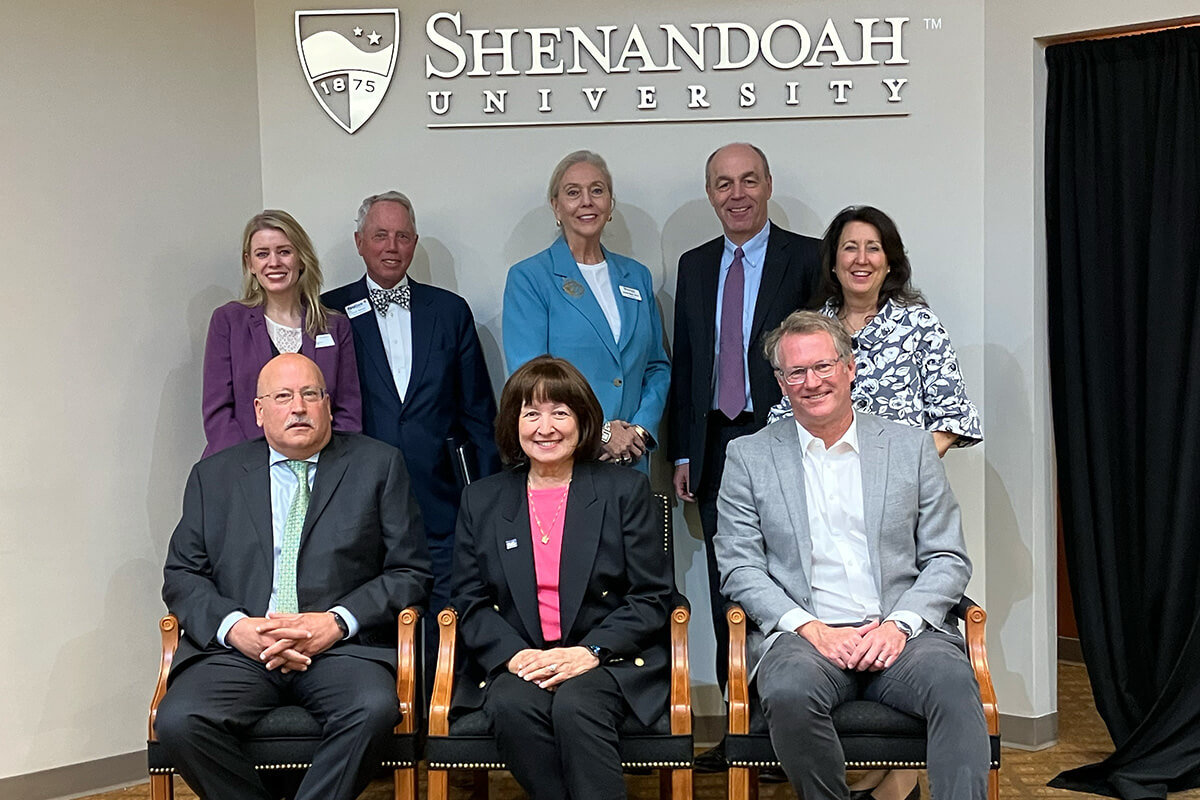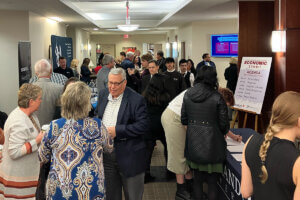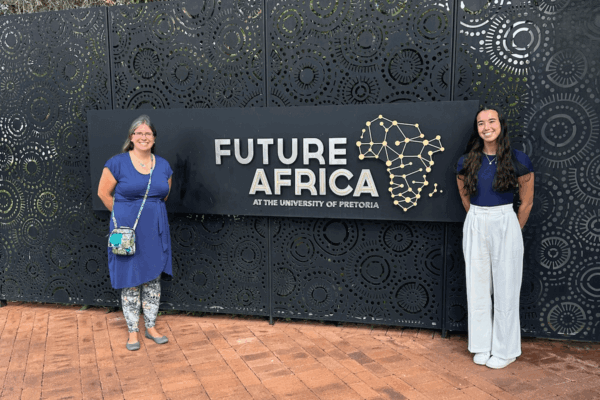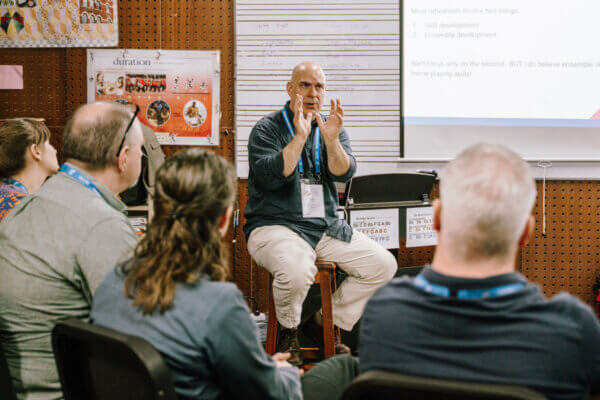Navigating Economic Trends For 2024
Economic Summit Provides Insights, From Labor Market Shifts to Supply Chain Dynamics

 The second annual Top of Virginia Regional Chamber Economic Summit, held at Shenandoah University on Nov. 15, attracted 315 participants from business, nonprofit, educational, and government sectors. Sponsored by First Bank and the Shenandoah University School of Business, the event featured experts at federal, state, and local levels who provided insights into economic perspectives.
The second annual Top of Virginia Regional Chamber Economic Summit, held at Shenandoah University on Nov. 15, attracted 315 participants from business, nonprofit, educational, and government sectors. Sponsored by First Bank and the Shenandoah University School of Business, the event featured experts at federal, state, and local levels who provided insights into economic perspectives.
Navigating The State Of the Economy
Renee Haltom, vice president and regional executive at the Federal Reserve Bank of Richmond, delivered the keynote address identifying five economic trends emerging for 2024. These included:
- A Slower Economy with A Potential Soft Landing: Consumer spending is anticipated to slow down due to the depletion of pandemic savings, leading to a potential soft landing.
- Normalization of the Labor Market: The labor market is anticipated to return to a more balanced state following the shifts in job growth triggered by the pandemic. Haltom noted that sustaining alignment with population growth usually entails adding around 80 to 100 thousand jobs to the economy each month. As the above-average pace of job growth diminishes, a considerable gap will persist between the demand for workers and the existing supply, indicating an ongoing need for workforce adjustments.
- Continued Housing Shortage: Haltom underscored the persistent housing shortage prevalent across regions. This scarcity of available inventory is directly contributing to restricted housing activity, consequently exerting upward pressure on housing prices.
- Elevated Inflation and High Rates: Inflation is predicted to remain elevated, keeping interest rates high.
- Key Moment For Regional Competition: Haltom stressed the importance of regions competing for workers and businesses, noting variations in recovery rates.

The Federal Reserve Bank of Richmond serves the Fifth Federal Reserve District, which covers the states of Maryland, Virginia, North Carolina, and South Carolina, and 49 counties constituting most of West Virginia and the District of Columbia.
Haltom said work is underway to explore ways to assist regions in tackling economic challenges, including workforce-related issues, funding models for early childhood services, and training through community colleges. The Richmond Fed is also looking to address funding shortfalls in areas such as health care, technology, and other services to help regions bridge existing gaps and explore potential solutions.
Disruptions are still with us to some extent. There’s still a lot of stuff out there that’s propping up this economy, and it has been incredibly resilient. The data are coming in almost stronger than we can believe, but some tailwinds we’ve been facing in the economy seem poised to diminish. That’s where we are heading into 2024.”
Renee Haltom, Vice President and Regional Executive at the Federal Reserve Bank of Richmond
Managing The Supply Chain: The Port of Virginia

Stephen A. Edwards, CEO and executive director of the Virginia Port Authority, gave a detailed presentation about the Port of Virginia. He highlighted its unique organizational structure and role in managing the shipping of manufactured goods across the supply chain, a term that gained prominence during the pandemic-induced delivery delays.
Located in Norfolk, the Port of Virginia operates on the open market and competes with shipping ports across the U.S. It delivers to 75% of the U.S. population in two days via East Coast railway with direct connectivity to key inland and Midwest markets, according to its website. In the Shenandoah Valley, the Virginia Inland Port, located in Warren County, Virginia, next to the Norfolk Southern rail line and two interstate highways (I-66 and I-81), serves as a transportation hub of the Virginia Port Authority. It plays a role in Virginia’s ship-to-rail-to-truck supply line between Europe, China, and other foreign manufacturers.
If you think about international trade, whatever is going on in the world, somewhere there is an impact on the port.”
Stephen A. Edwards, CEO and Executive Director of the Virginia Port Authority
Local Experts Address Issues at the Top of Virginia

First Bank President and CEO Scott Harvard led a panel of local business leaders to discuss economic issues from a regional perspective. Participants included Tanya Matthews, president of TMG Construction; JP Carr, president of Glaize Developments Inc. and owner of Merrifield Homes; and W. Michael Perry, president of Perry Engineering Company Inc., as panelists. The group discussed topics ranging from interest rates and inflation to employee training and retention.
It is so important for us to understand what is happening in our economy, both from the big-picture perspective at the commonwealth level to what’s happening on the ground level here at the Top of Virginia.”
Scott Harvard, President and CEO, First Bank
Other remarks were delivered by Cynthia Schneider, CEO of the Top of Virginia Regional Chamber; Astrid Sheil, Ph.D., dean of the Shenandoah University School of Business; and Shenandoah University President Tracy Fitzsimmons, Ph.D.
We believe the economic summit is something that has enormous value for our region. There’s a hunger for what we shared today because knowledge is power, and it informs everything we do for our county, for our region, and our commonwealth.’’
Dr. Astrid Sheil, Ph.D., Dean of the School of Business
To learn more about the 2023 Economic Summit, check out the event program.
The Shenandoah University School of Business combines AACSB International-accredited programs with rich student-life activities, internships, study-abroad opportunities, mentorship and entrepreneurship experiences, leadership opportunities, and fun. Learn more at su.edu/business.





